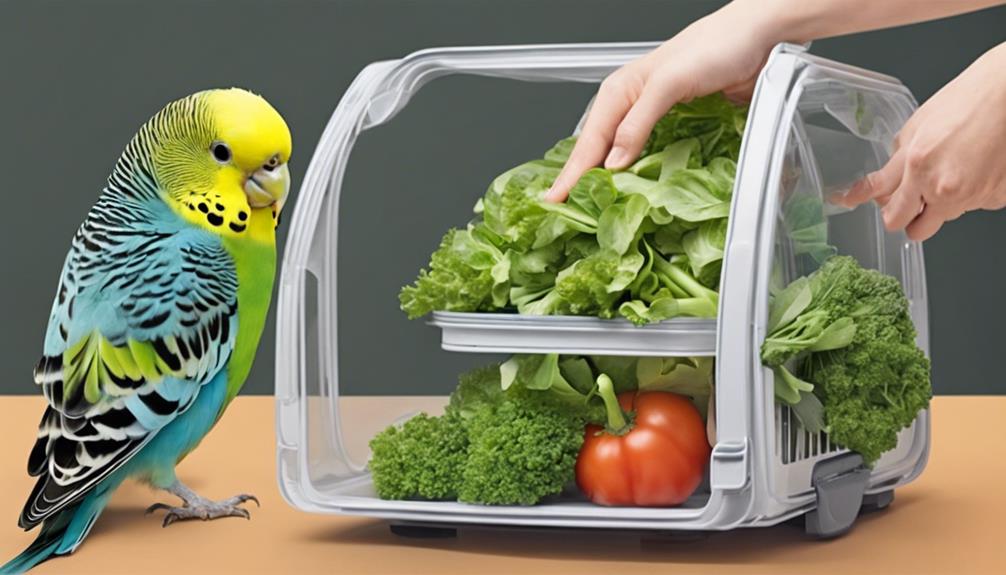How to Prepare Your Budgerigar (Budgie) for Vet Visits

Preparing your budgerigar for a vet visit involves several essential tips. Firstly, ensure the bird is comfortable with its carrier by introducing it gradually. Place familiar toys or treats inside to create a positive association. Secondly, research avian vets in your area to find one with experience in treating budgerigars. Finally, schedule the appointment at a time when your bird is typically most active and alert.
After the vet visit, provide your budgerigar with a quiet and warm environment to recover. Monitor its behavior closely for any signs of distress or illness. Offer its favorite foods and ensure access to clean water. If the vet prescribed any medications, administer them as instructed. Remember to follow up with the vet if you have any concerns about your budgerigar’s health post-visit.
Understanding Your Budgie’s Stress Triggers
Understanding your budgie’s stress triggers is crucial for ensuring a successful and smooth vet visit. Stress management plays a pivotal role in maintaining your feathered friend’s well-being. Behavioral triggers can vary among budgies, but common stressors include sudden loud noises, unfamiliar environments, and being handled roughly. By recognizing these triggers, you empower yourself to create a calming and supportive environment for your pet.
To effectively manage your budgie’s stress, it’s essential to observe their behavior closely. Signs of distress may manifest as feather plucking, excessive squawking, or agitated movements. By identifying these cues early on, you can intervene promptly and alleviate their anxiety before it escalates.
Additionally, establishing a routine that minimizes potential stressors can greatly benefit your budgie. Familiarity and predictability help create a sense of security for your pet, reducing the likelihood of stress during vet visits. By addressing behavioral triggers and implementing proactive stress management strategies, you pave the way for a harmonious and successful experience at the vet.
Gentle Handling Techniques for Vet Visits
When preparing a budgerigar for a vet visit, it’s crucial to employ gentle handling techniques.
Calm restraint methods and positive reinforcement techniques can help alleviate your budgie’s stress and anxiety during the visit.
Calm Restraint Methods
Implementing gentle handling techniques during vet visits is essential to ensure the comfort and safety of your budgerigar. When practicing calm restraint methods, it’s crucial to create an environment that promotes relaxation and trust-building.
Here are some key strategies to help your budgie feel at ease during vet appointments:
- Provide a Comforting Environment: Ensure the vet’s office is quiet and peaceful to reduce stress.
- Use Bonding Exercises: Engage in activities that strengthen the bond between you and your budgie.
- Practice Relaxation Techniques: Incorporate calming techniques like soft talking or gentle petting to help your budgie relax before and during the visit.
Positive Reinforcement Techniques
To facilitate a positive vet visit experience for your budgerigar, incorporate gentle handling techniques that focus on reinforcing desired behaviors through rewards and encouragement. Clicker training and treats can be effective tools in this process.
Introduce the clicker to your budgie gradually, associating the sound with a tasty treat. Target training is another helpful method where you teach your bird to touch a target stick, gradually guiding them to the desired behavior with rewards.
Essential Items for Your Birdy Travel Kit
Ensure your birdy travel kit contains the essential items needed to keep your budgerigar safe and comfortable during vet visits. When preparing for a journey with your feathered friend, consider the following items:
- Birdy calming techniques: Include items like a favorite toy or a comforting piece of cloth that carries familiar scents to help alleviate travel stress.
- Comfort items: Pack a small blanket or a cozy perch to provide a sense of security for your budgie during the trip.
- Emergency supplies: Be prepared for any unforeseen circumstances by carrying essentials such as a first aid kit, extra food, and water to ensure your budgerigar’s well-being while away from home.
Familiarizing Your Budgie With the Carrier
Familiarize your budgie with the carrier by gradually introducing it as a safe and comfortable space for them to explore and enjoy. Carrier training is essential for reducing stress during vet visits. Begin by placing the carrier in the room where your budgie spends the most time, allowing them to investigate it at their own pace. Create a positive association by placing treats or favorite toys inside the carrier. Encourage your budgie to enter the carrier voluntarily, rewarding them for each successful interaction.
As your budgie becomes more comfortable, close the carrier door for short periods while they’re inside, gradually increasing the duration. This gradual approach aids in stress management, helping your budgie acclimate to being confined in the carrier. Use a calm and reassuring tone during training sessions to instill a sense of security.
Building Positive Vet Clinic Associations
Introduce your budgie to the vet clinic environment gradually to create positive associations and ease any potential stress during visits. By taking small steps in familiarizing your feathered friend with the clinic setting, you can help build trust and comfort, ensuring a smoother experience for both your budgie and the veterinary team.
- Relaxation Techniques: Implement calming techniques such as gentle music or familiar scents to help your budgie relax in the clinic environment.
- Veterinary Relationships: Encourage positive interactions between your budgie and the veterinary staff to foster trust and familiarity.
- Clinic Environment: Create a welcoming space at home that mimics aspects of a vet clinic, such as using a carrier or introducing new sounds, to acclimate your budgie to the clinic setting.
Preparing Your Budgie Mentally and Emotionally
To prepare your budgie mentally and emotionally for vet visits, engage in activities that promote relaxation and trust-building. Begin by incorporating relaxation exercises into your budgie’s daily routine. Calm environments, soothing music, and gentle interactions can help alleviate stress and anxiety.
Additionally, mental preparation is key; gradually introduce your budgie to the carrier and car rides to familiarize them with the process. Bonding activities such as spending quality time together, talking softly, and offering favorite treats can strengthen the emotional connection between you and your feathered friend.
Providing emotional support through reassuring words and gentle petting will help your budgie feel safe and secure during vet visits. Remember, a relaxed and trusting budgie is more likely to have a positive experience at the vet clinic. By investing time and effort in preparing your budgie mentally and emotionally, you’re nurturing a strong bond and ensuring their well-being.
Post-Vet Visit Care and Comfort for Your Budgie
After a vet visit, tender care and comfort are essential to help your budgie recuperate and feel at ease. Implementing comforting routines can greatly assist in soothing your feathered friend post-visit. Here are some tips to ensure your budgie’s well-being:
- Maintain a Quiet Environment: Create a peaceful atmosphere by minimizing loud noises and disturbances around your budgie’s living space.
- Offer Nutritious Foods and Fresh Water: Provide your budgie with a balanced diet and ensure access to clean water to support its recovery.
- Monitor Behavior Changes: Keep a close eye on your budgie’s behavior after the vet visit. If you notice any unusual signs of distress or discomfort, consult with your avian veterinarian promptly.
Post visit relaxation is crucial for your budgie’s healing process. By following these guidelines and showering your budgie with love and tranquility, you can help it bounce back to its cheerful self in no time.
Frequently Asked Questions
Can I Bring My Other Pets With Me to the Vet Visit With My Budgie?
When taking a budgie to the vet, it’s best to leave other pets at home. Pet socialization and multi-species interactions can be stressful for the bird. Behavioral training may help, but prioritize the budgie’s comfort and safety.
How Often Should I Schedule Vet Visits for My Budgie?
Regular vet visits are vital for a budgie’s health. Experts recommend scheduling check-ups at least once a year. By managing diet and ensuring a proper cage setup, owners can promote their budgie’s well-being and catch any health issues early.
Are There Any Specific Vaccinations My Budgie Needs?
Vaccines play a crucial role in safeguarding a budgie’s health. Understanding the vaccine schedule and potential side effects is vital to protect your feathered friend from common poultry diseases and boost their immune system effectively.
How Can I Tell if My Budgie Is in Pain or Distress During the Vet Visit?
Recognizing signs of distress in a budgie during a vet visit is crucial. Watch for changes in behavior like excessive squawking or fluffing feathers. To offer comfort, speak softly and gently handle them.
What Should I Do if My Budgie Becomes Aggressive or Scared at the Vet Clinic?
When faced with a budgie’s aggression or fear at the vet clinic, gently approach and avoid sudden movements. Employ calming techniques like soft talking or covering the cage to provide a sense of security.











